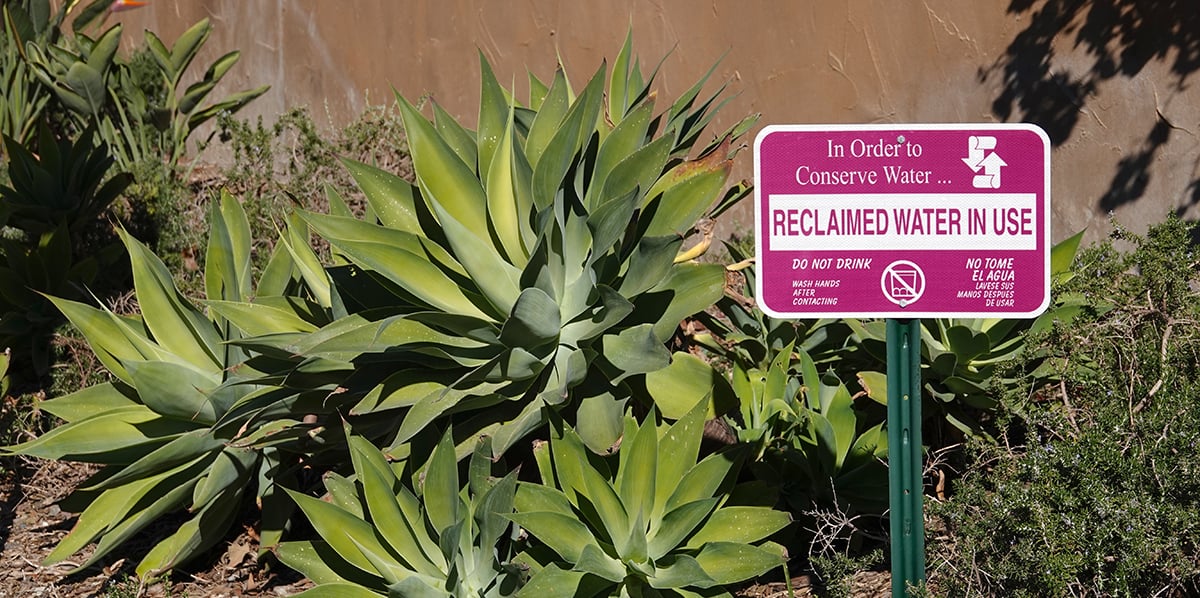Over the last 50 years, the U.S. has experienced extreme droughts and a major population increase. It is now more important than ever to utilize new water sources and resource management tools to meet current and future water needs. One such source that is already being tapped is reused or recycled water. Reclaimed water and wastewater (hereafter referred to as simply “water”) are recovered from a variety of sources, then treated and reused in industrial processes, environmental restoration and agricultural irrigation, added to potable water supplies, and more.
How Does Water Reuse Work?
Reclaimed water is mainly sourced from stormwater, municipal wastewater and agricultural runoff. This water is filtered, treated and eventually purified at wastewater treatment plants, one of the most popular kinds of pollution control in the country. Of course, reclaimed water is treated differently depending on its future use. Water that is bound for non-potable agricultural use is treated less extensively than water that is going to augment municipal water supplies, for example.  Reclaimed water headed for drinking water supplies is usually treated with advanced techniques like reverse osmosis (RO) and/or activated carbon (AC) filtration. To purify water using RO, pressure is applied to a highly concentrated solution (such as saltwater) which forces a less concentrated solution (such as fresh water) through a semi-permeable membrane. This membrane filters out contaminants (including metals, pesticides and other particles), resulting in a fresh water solution on the membrane’s other side. AC filters also remove contaminants like chlorine and pesticides from water and are often used in conjunction with RO to treat future drinking water.
Reclaimed water headed for drinking water supplies is usually treated with advanced techniques like reverse osmosis (RO) and/or activated carbon (AC) filtration. To purify water using RO, pressure is applied to a highly concentrated solution (such as saltwater) which forces a less concentrated solution (such as fresh water) through a semi-permeable membrane. This membrane filters out contaminants (including metals, pesticides and other particles), resulting in a fresh water solution on the membrane’s other side. AC filters also remove contaminants like chlorine and pesticides from water and are often used in conjunction with RO to treat future drinking water. .jpg?width=298&height=299&name=Reverse%20Osmosis%20Diagram%20image%20(2).jpg)
While RO is an effective way to treat reclaimed water, the process wastes more water than it produces and is often cost-prohibitive. Research is currently underway to discover less wasteful and less expensive treatment options.
Current Reuse Efforts
According to the U.S. Environmental Protection Agency (EPA), there are currently no federal regulations in place regarding water reuse. As such, water recycling programs are typically maintained at the state level and vary across the country. But water reuse is nothing new in the U.S. In fact, water reuse programs have been in place in California since the 1970s to help combat the area’s aridification. Today, at least 43 U.S. states are practicing water reuse in some form.
While water reuse is extremely helpful in building water security and preserving our natural environment, some American consumers have reservations about reintroducing recycled water into drinking water supplies. To combat the stigma surrounding water reuse, some companies are trying out a novel approach—brewing lagers with entirely recycled water. Fox City Brewing Company’s Revival Lager was dreamed up by H2O Innovation, a water technology company, and Fox City’s brewer, Chris Bump.
“If you give somebody a glass of water and tell them that it's been purified from wastewater, more than likely one person out of two will not drink it,” explained Guillaume Clairet, chief operating officer at H2O Innovation. “But if you convert that same water to beer, then all of a sudden nine out of 10 will.”
This past March, the Revival Lager was served at the WateReuse Association’s annual symposium in Atlanta. To date, around 100 breweries have made so-called "recycled beers."
Looking Forward
In a world where water scarcity affects 40% of the population, water recycling is the way of the future. And as new treatment technologies develop, water reuse will become cheaper and more sustainable over time, serving millions of people and nourishing our environment.
Learn more about the technologies contributing to the future of the wastewater sector in our blog post, “How Augmented and Virtual Reality Enhance the Water and Wastewater Industries.”

